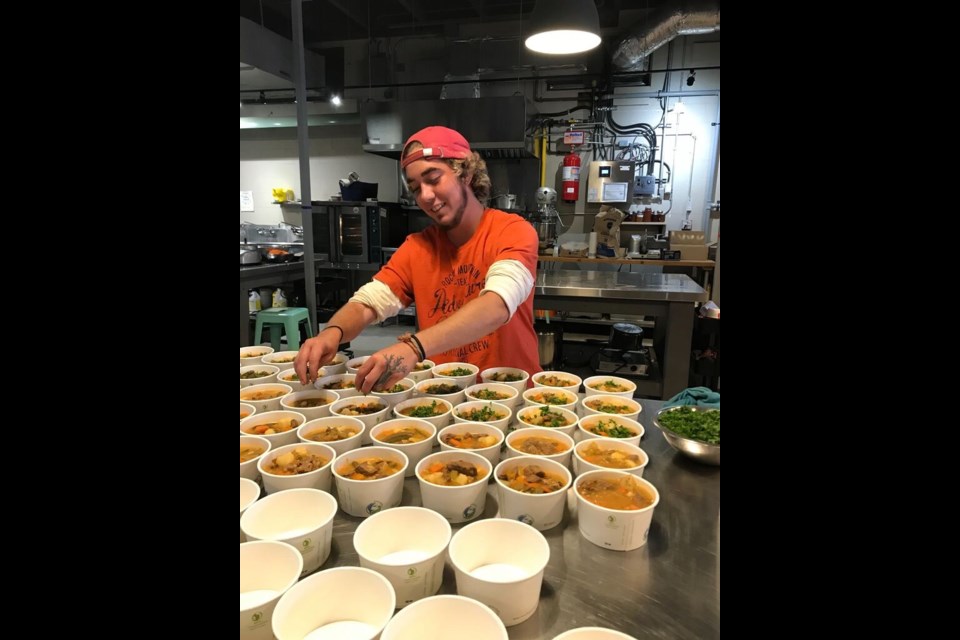THUNDER BAY – When crisis hits, is Thunder Bay ready to ensure all residents can meet their basic food needs? Local experiences during the pandemic point to the need to be better prepared, found a report from the Thunder Bay and Area Food Strategy.
The report lays the groundwork for the development of a "Community Emergency Food Response Plan" meant to help the city hit the ground running in the face of future emergencies.
“We’re building our parachute so when there's an emergency, we can activate it,” said Courtney Strutt, project coordinator with the food strategy. “Whatever that looks like, we know it’s going to pull certain people to the table immediately to start these conversations.”
The report was written with data gathered in 2020 and 2021 from dozens of food banks and other service providers, and over 150 people who received food assistance.
While underlining the herculean efforts of community groups to get food and other supports to those in need, it concludes those efforts could be deployed more quickly and efficiently, and identifies barriers faced by recipients.
“The response at the community level was fragmented, with limited collaboration between existing food access infrastructure and other community organizations,” it states.
Erin Beagle, executive director of food-focused non-profit Roots to Harvest, welcomes the prospect of an emergency plan.
“I think it gives us a head start,” she said. “Whereas in this [crisis], we were just in catch-up mode all the time… now we have a starting point.”
The catalyst for the project was an assessment of local emergency food support systems led by the Indigenous Food Circle in 2020.
Challenges identified
The number of Canadians facing food insecurity rose from 4.4 million to 6.2 million people during the pandemic, and several local organizations saw demand for food aid jump by a quarter or more.
A large part of the demand for aid during COVID-19 stemmed from underlying issues of poverty and inequality that existed long before, the report concludes, saying the pandemic pushed many who were already vulnerable over the edge.
In a survey, 70 per cent of those who access food support during the pandemic reported also needing to do so before it started.
The early response to COVID-19 left some unsure of how to access help, the report found, as most food banks and other agencies closed their doors in March of 2020.
Asked what made it harder to get food during the pandemic, 46 per cent of respondents cited transportation, 25 per cent having no internet or phone, 22 per cent the need to register to get food, 20 per cent pickup locations, 20 per cent health issues, and 18 per cent ID requirements.
The decision to consolidate to one central food bank location from April to June 2020 addressed logistical challenges, but “was a barrier for many.”
“There was no one clear source of information about where to get food,” and “it became difficult to reach regular service providers,” according to the report.
Efforts like home deliveries of food hampers offered by the RFDA through 211 helped, but gaps remained.
Those results show there’s a need to go further to meet people where they are, said Beagle.
“We realized there are some gaps that we should be able to anticipate before people start feeling the lack of service,” she said. “Examples would be seniors, people with mobility issues, people with disabilities, vulnerable populations, and [those on] low income.”
What worked
The pandemic highlighted gaps, but also some encouraging successes, said Strutt. Groups like Roots to Harvest leveraged existing relationships to deliver food aid efficiently and in a way that provided other benefits, she said.
It formed needs-based partnerships with 20 organizations, offering resources including staff and its industrial kitchen to get food into the right hands.
The strength of that approach lay in a close working relationship with agencies, like ONWA, that aren’t food-focused but are best positioned to reach specific communities of people, the report suggests.
“It makes sense, because they know the people – they know the needs of the people, and the people trust them,” Beagle said.
The report also said government aid for emergency food efforts had been generous, but recommended ways to better distribute it.
In a survey of local agencies, 65 per cent said they accessed funds only from local sources like the Thunder Bay Community Foundation, United Way, and Thunder Bay DSSAB, though in some cases those groups were administering government funding.
Recommendations made
The report makes a number of recommendations for local organizations, the city, and provincial and federal governments.
Local food and social service groups are asked to participate in developing the emergency food plan, a process expected to roll out in the coming months, and to commit to relevant roles and responsibilities in the event of an emergency.
They are also urged to make access to food “barrier-free” during emergencies, removing ID and registration requirements and offering a greater range of pickup and delivery options.
In an emergency, local groups should organize into “hubs” focused on dedicated tasks like procuring food, packaging, distribution, securing funding, and public communication to maximize resources, the report suggests.
It recommends the city commit to fund a full-time “emergency food response coordinator” in the event the emergency plan is activated.
Meanwhile, it urges provincial and federal governments to take a regional approach to funding, and simplify application processes during emergencies.
“We heard from organizations that finding funding becomes a huge capacity burden,” said Strutt. “That become a huge part of someone’s responsibilities that takes them away from frontline response.”
